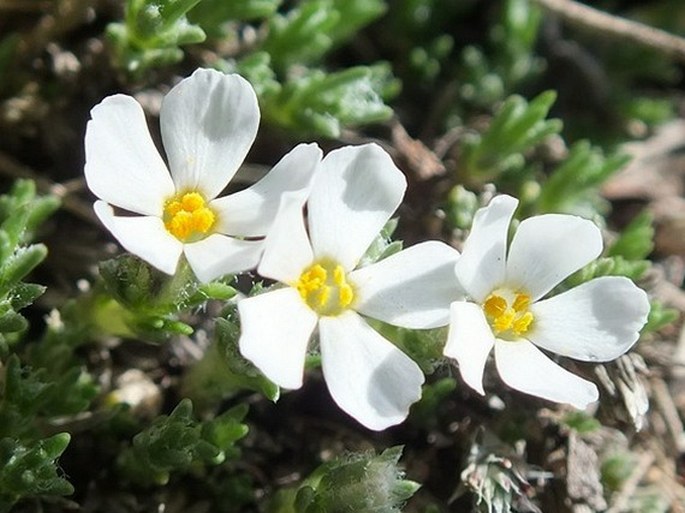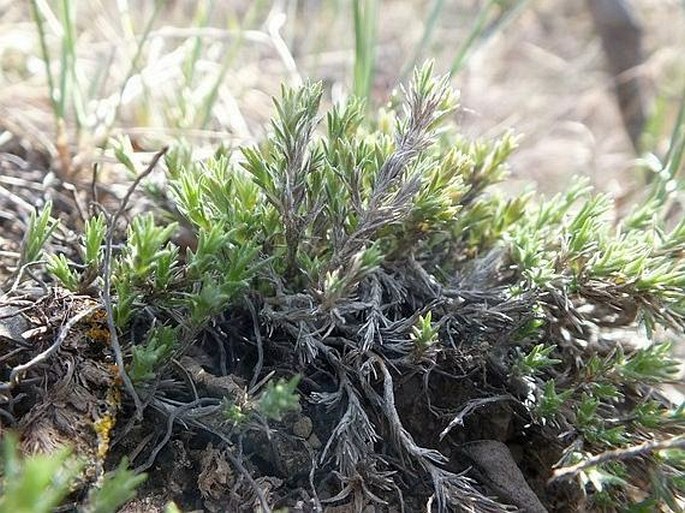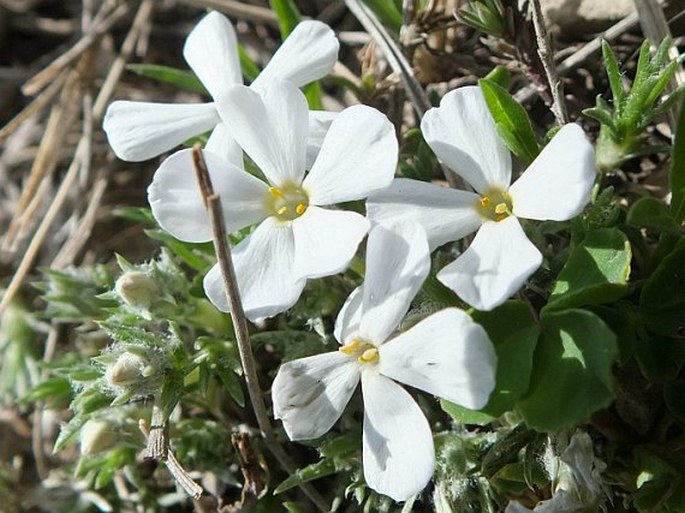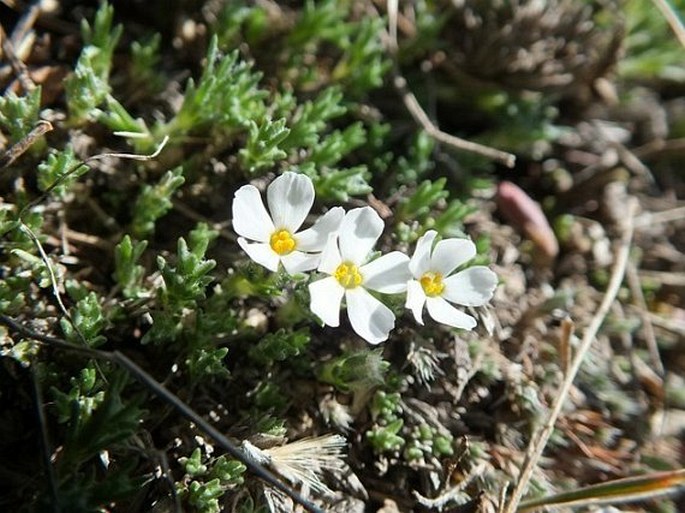Family: Polemoniaceae Juss.

Distribution: West of North America, from Alaska and Yukon and Canadian provinces from British Columbia to Manitoba and from there to northern part of New Mexico, Arizona and eastern parts of California. Six subspecies are recognized.
Ecology: Dry grasslands, rocky and eroded slopes, plains to foothills. Blooms from April to June.
Description: Perennial herb with woody stem, to 10 cm tall, densely tufted, cushion-forming, resembling moss when not in flower. Leaves opposite, needle-shaped, 4–10 mm long, less than 2 mm wide, overlapping, greyish green with woolly hairs. Flowers terminal, solitary, sometimes up to 3, white to pale blue, 10–15 mm across, tube 10–12 mm long, pentamerous. Fruit is an elliptic capsule enclosed in the calyx, splitting alond 3 lines, seeds few.
Use: The Blood tribe used the flowers to produce a yellow dye.
Note: This Phlox was named for a member of John Franklin’s first expedition called Coppermine Expedition into arctic, Robert Hood. Not only he didn’t survive this ill-fated expedition, he was murdered by one of the other members. His name survived in the name of this Phlox and a sedge, Carex hoodii and in beautiful paintings he produced for the expedition.




These images were taken in Canada, Alberta, Calgary, Confluence Park (April 30 and May 1, 2014).


